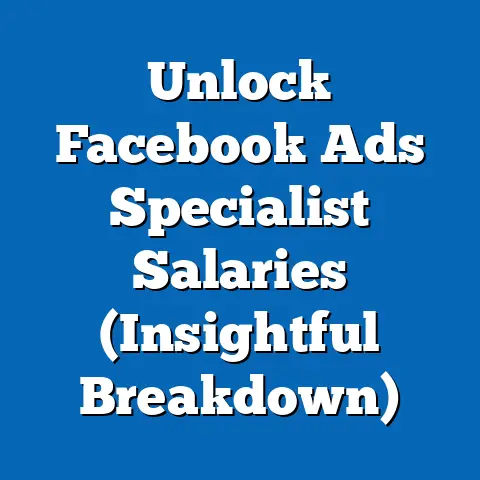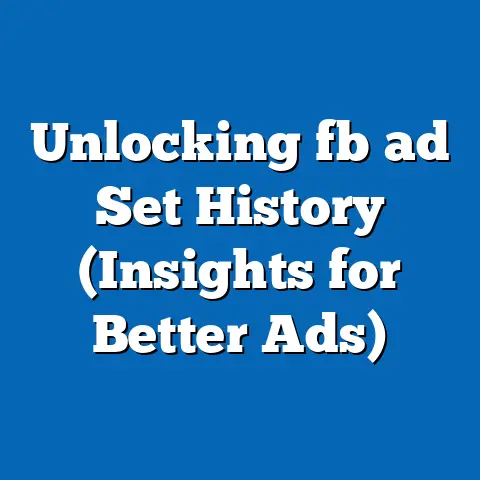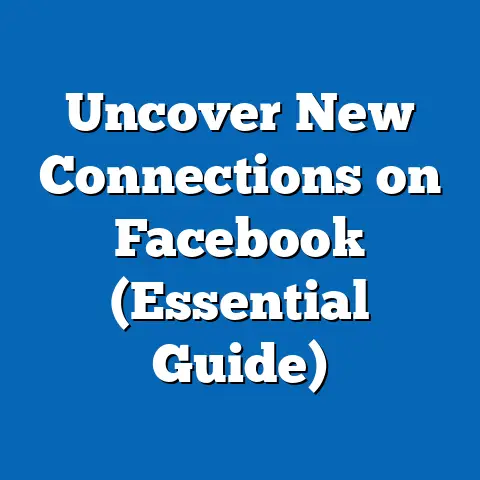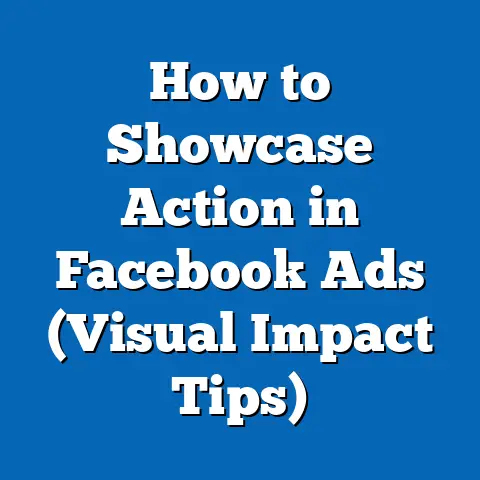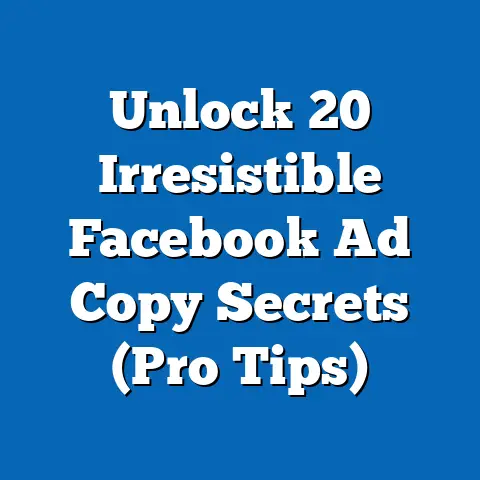Dominate Market Testing with Facebook Ads (Proven Strategies)
Are you tired of launching ad campaigns that fall flat? Do you wish you had a crystal ball to predict what your audience will actually respond to? The truth is, that crystal ball exists – it’s called market testing, and Facebook Ads is the perfect tool to wield it. I’ve personally seen businesses transform their entire marketing strategy simply by embracing the power of testing on Facebook.
In this article, I’ll dive deep into how you can use Facebook Ads to conduct effective market testing. I’ll share proven strategies that I’ve used over the years, helping businesses just like yours optimize their campaigns, understand their audience, and achieve better results. Let’s get started!
Understanding Market Testing in the Context of Facebook Ads
Market testing is essentially a controlled experiment where you introduce a new product, service, or marketing campaign to a limited, representative segment of your target audience before a full-scale launch. It allows you to gather valuable feedback, identify potential problems, and refine your approach based on real-world data. Think of it as a dress rehearsal before the big show.
Facebook Ads is ideally suited for market testing because it offers unparalleled capabilities:
- Granular Audience Targeting: You can pinpoint specific demographics, interests, behaviors, and even custom audiences to ensure your test group accurately represents your target market.
- Detailed Analytics: Facebook provides a wealth of data on ad performance, allowing you to track key metrics like engagement, click-through rates, and conversions.
- Flexible Ad Formats: From simple image ads to engaging video ads and interactive experiences, Facebook offers a variety of formats to test different messaging and creative approaches.
- Cost-Effectiveness: Compared to traditional market research methods, Facebook Ads can be a more budget-friendly way to gather insights and validate your ideas.
Why Facebook over other channels? Well, consider this: over 3 billion people use Facebook every month (Statista, 2024). That’s a massive pool of potential customers! The platform’s sophisticated targeting capabilities and robust analytics make it a goldmine for marketers looking to understand their audience and optimize their campaigns. I’ve found that the speed and efficiency with which you can gather data on Facebook are unmatched.
Proven Strategies for Dominating Market Testing with Facebook Ads
Now, let’s get into the nitty-gritty of how to dominate market testing with Facebook Ads. These are the strategies that I’ve seen work time and time again, and I’m excited to share them with you.
A. Define Clear Objectives
Before you even think about creating an ad, you need to define what you want to achieve with your market test. What specific questions are you trying to answer? What assumptions are you trying to validate?
Your objectives should be SMART:
- Specific: Clearly define what you want to achieve.
- Measurable: Identify how you will track your progress.
- Achievable: Set realistic goals that are within your reach.
- Relevant: Ensure your objectives align with your overall business goals.
- Time-Bound: Set a specific timeframe for your test.
Here are a few examples of objectives you might have:
- Increase Brand Awareness: Determine which ad creative generates the most brand recall among your target audience.
- Drive Sales: Identify the most effective call-to-action for driving online purchases.
- Test Product Concepts: Gauge interest in a new product or service by measuring engagement with different ad formats.
- Optimize Landing Page Performance: Test different landing page layouts and messaging to improve conversion rates.
I remember working with a small e-commerce business that was launching a new line of organic skincare products. Their objective was to determine which product resonated most with their target audience. By setting this clear objective upfront, we were able to design targeted ads that showcased each product and track which ones generated the most interest and sales. The results were surprising – a product they thought would be a niche item ended up being a best-seller!
B. Audience Segmentation
Audience segmentation is the art of dividing your target market into smaller, more homogeneous groups based on shared characteristics. This allows you to tailor your messaging and creative to resonate with each specific segment, increasing the likelihood of engagement and conversion.
Facebook offers a wide range of targeting options to create distinct audience segments:
- Demographics: Target users based on age, gender, location, education, job title, and more.
- Interests: Reach users who have expressed interest in specific topics, hobbies, or activities.
- Behaviors: Target users based on their online behavior, purchase history, and device usage.
- Custom Audiences: Upload your own customer data (e.g., email lists, phone numbers) to create highly targeted audiences.
- Lookalike Audiences: Expand your reach by targeting users who are similar to your existing customers.
For example, if you’re selling athletic apparel, you might create separate segments for:
- Yoga Enthusiasts: Target users interested in yoga, meditation, and healthy living.
- Runners: Reach users who participate in running events, follow running blogs, or purchase running shoes.
- Gym-Goers: Target users who frequent gyms, fitness centers, or follow fitness influencers.
I once worked with a local restaurant that wanted to promote their new brunch menu. Instead of targeting everyone in the city, we segmented their audience based on interests like “brunch,” “foodie,” and “mimosa.” We also targeted users who had recently checked in at nearby restaurants. This targeted approach resulted in a significant increase in brunch reservations and a much higher ROI on their ad spend.
C. Creative Variation and A/B Testing
This is where the magic happens! Once you have your objectives and audience segments defined, it’s time to create different ad creatives and copy variations to see what resonates best. A/B testing, also known as split testing, involves running two or more versions of an ad simultaneously to determine which one performs better.
Here are some actionable tips for A/B testing:
- Vary Headlines: Test different headlines to see which ones grab attention and entice users to click.
- Experiment with Images/Videos: Use different visuals to showcase your product or service and see which ones generate the most engagement.
- Try Different Calls to Action: Test different calls to action (e.g., “Shop Now,” “Learn More,” “Get Started”) to see which ones drive the most conversions.
- Test Different Ad Formats: Experiment with different ad formats (e.g., image ads, video ads, carousel ads) to see which ones perform best for your objectives.
When interpreting A/B test results, focus on statistically significant differences. Don’t jump to conclusions based on small variations in performance. Facebook provides statistical significance data within Ads Manager, so pay attention to it! Also, make sure you’re testing one variable at a time. Changing too many elements at once makes it impossible to know what actually drove the difference in performance.
One of my favorite A/B testing success stories involves a SaaS company that was struggling to increase sign-ups for their free trial. We tested two different versions of their ad: one focused on the product’s features, and the other focused on the benefits and pain points it solved. The benefit-focused ad outperformed the feature-focused ad by a whopping 300%! This simple A/B test completely changed their marketing strategy and led to a significant increase in sign-ups.
D. Utilizing Facebook Insights for Data-Driven Decisions
Facebook Insights is your best friend when it comes to understanding the performance of your market tests. It provides a wealth of data on ad performance, audience demographics, and user behavior.
Here are some key metrics to focus on:
- Engagement Rate: Measures how much users are interacting with your ad (e.g., likes, comments, shares). A high engagement rate indicates that your ad is resonating with your audience.
- Click-Through Rate (CTR): Measures the percentage of users who click on your ad after seeing it. A high CTR indicates that your ad is compelling and relevant.
- Conversion Rate: Measures the percentage of users who complete a desired action after clicking on your ad (e.g., making a purchase, signing up for a newsletter). A high conversion rate indicates that your ad is effectively driving results.
- Cost Per Acquisition (CPA): Measures the cost of acquiring a new customer through your ad campaign. A low CPA indicates that your campaign is efficient and cost-effective.
- Reach and Frequency: Reach measures the number of unique users who saw your ad, while frequency measures the average number of times each user saw your ad. Monitoring these metrics helps you avoid ad fatigue and optimize your budget.
I always tell my clients to become data detectives. Look for patterns and trends in your data. Which audience segments are responding best to your ads? Which ad creatives are driving the most conversions? Use these insights to refine your targeting, messaging, and creative.
E. Iterative Testing Approach
Market testing is not a one-time event. It’s an ongoing process of experimentation and optimization. Embrace an iterative testing approach, where you continually refine your ad strategies based on the results of your tests.
Here’s how to implement feedback loops:
- Gather Data: Collect data on ad performance from Facebook Insights and other sources.
- Analyze Results: Identify patterns and trends in your data.
- Generate Hypotheses: Develop hypotheses about why certain ads are performing better than others.
- Test New Variations: Create new ad variations based on your hypotheses.
- Repeat: Continue this process of testing, analyzing, and refining your ads.
The key is to be flexible and adaptable. Don’t be afraid to change your approach based on what the data tells you. I’ve seen campaigns that started off poorly completely turn around after a few rounds of iterative testing.
F. Case Studies of Successful Market Testing with Facebook Ads
Let’s take a look at a few real-world examples of businesses that have successfully used Facebook Ads for market testing:
- Example 1: Subscription Box Service: A subscription box service used Facebook Ads to test different themes for their upcoming box. They created ads showcasing each theme and tracked which ones generated the most sign-ups. This allowed them to identify the most popular theme and focus their efforts on creating a box that their audience would love.
- Example 2: Mobile App Developer: A mobile app developer used Facebook Ads to test different value propositions for their app. They created ads highlighting different features and benefits and tracked which ones generated the most app downloads. This helped them refine their messaging and improve their app store listing.
- Example 3: Local Bakery: A local bakery used Facebook Ads to test different menu items. They created ads showcasing different pastries and cakes and tracked which ones generated the most in-store traffic. This allowed them to identify their most popular items and optimize their menu.
These are just a few examples, but they illustrate the power of Facebook Ads for market testing. By following the strategies outlined in this article, you can unlock the potential of Facebook Ads and achieve better results with your advertising campaigns.
Conclusion
Market testing with Facebook Ads is a powerful strategy that can help you understand your audience, optimize your campaigns, and achieve better results. By defining clear objectives, segmenting your audience, A/B testing your creatives, and leveraging Facebook Insights, you can make data-driven decisions that will drive your business forward.
Remember, market testing is an ongoing process. Embrace an iterative approach, continually refine your strategies, and don’t be afraid to experiment. The more you test, the more you’ll learn about your audience and the more successful your campaigns will be.
Now it’s your turn! Take what you’ve learned here and start your own market testing journey with Facebook Ads. The potential for increased ROI and marketing effectiveness is waiting for you. Go out there and dominate! What are you waiting for? Create that first ad! I promise you’ll learn something valuable, even if it’s just what not to do next time. Good luck!

